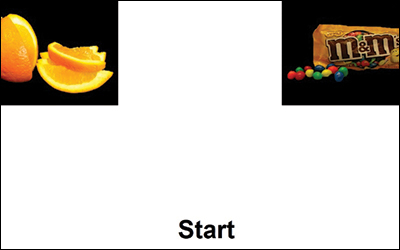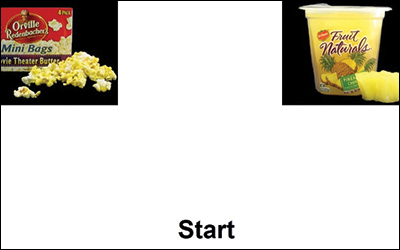Teaching Current Directions
Teaching Current Directions in Psychological Science
Aimed at integrating cutting-edge psychological science into the classroom, Teaching Current Directions in Psychological Science offers advice and how-to guidance about teaching a particular area of research or topic in psychological science that has been the focus of an article in the APS journal Current Directions in Psychological Science. Current Directions is a peer-reviewed bimonthly journal featuring reviews by leading experts covering all of scientific psychology and its applications and allowing readers to stay apprised of important developments across subfields beyond their areas of expertise. Its articles are written to be accessible to nonexperts, making them ideally suited for use in the classroom.
Visit the column for supplementary components, including classroom activities and demonstrations.
Visit David G. Myers at his blog “Talk Psych”. Similar to the APS Observer column, the mission of his blog is to provide weekly updates on psychological science. Myers and DeWall also coauthor a suite of introductory psychology textbooks, including Psychology (11th Ed.), Exploring Psychology (10th Ed.), and Psychology in Everyday Life (4th Ed.).
Gasp! That Face Doesn’t Mean What You Think
A Handy Way to Study the Mind
By C. Nathan DeWall
Freeman, J. B. (2018). Doing psychological science by hand. Current Directions in Psychological Science, 27, 315–323.
When you look at a hand, what do you see? We use our hands to shake, strum, bake, eat, and signal pleasure or disdain. But, according to Jonathan Freeman (2018), a hand offers more than a behavioral tool to complete our everyday activities. Understanding a hand’s movements unlocks a map into the mind’s inner workings.
Psychological scientists have long studied hand movements to understand dynamic decision-making processes. Computer-based techniques for assessing fine-grained changes in hand movement speed and trajectory have contributed to this literature’s growth (e.g., mouse-tracking; Freeman & Ambady, 2010). For example, when you go shopping your hand may reach for the tasty marshmallows faster than the healthier mangos. Although this finding may seem trivial, the speed of hand movement trajectories can identify people prone to problem eating (Sullivan, Hutcherson, Harris, & Rangel, 2014). Unusually fast hands can predict an unhealthy future.
A hand movement’s speed tells only part of the story of how it relates to dynamic decision-making. The trajectory of a hand’s movement — the directness of its flight path toward an object — also signals how people make decisions. For example, imagine going to a voting booth and being presented with two candidate options. Both candidates are women who seem equally competent. Your hand wavers as you make your decision. After exiting the poll, a psychologist approaches you and asks, “How much did the candidate’s femininity influence your vote?” “Not at all,” you say. “I voted for the most qualified candidate.”
Or did you? In one study, participants viewed a series of political candidates and indicated whether the candidate was masculine or feminine (Carpinella, Hehman, Freemnan, & Johnson, 2016). Unbeknownst to participants, the computer mouse recorded the trajectory of their hand movement when making their decision (click here for a video demonstration). What did the researchers find? Unlike Democratic candidates, Republican female candidates benefited from being perceived as feminine. Hand movements that veered toward a judgment of masculinity tended to predict lost elections.
To bring this cutting-edge psychological science into the classroom, students will complete a demonstration of mouse-tracking (based on Sullivan et al., 2014). Ask students to think of their favorite foods. In my experience, you won’t have to try hard to get discussion going — students love thinking and talking about food. Did students first think of tasty foods? Healthy foods? Or foods that are both tasty and healthy?
Now that you have primed students to think about food, ask them to place their dominant hand in the center of their desk. Let them know that they will need to move their hand to the left corner or the right corner of their desk as they make some decisions. Using the following slides, ask students to move their hand to the food that they would prefer as quickly as possible.
Slide #1

Slide #2

Next, ask students to answer the following questions about their self-control (Brief Self-Control Scale; Tangney, Baumeister, & Boone, 2004) using the following scale: 1=not at all like me to 5=very much like me.
- I refuse things that are bad for me.
- I am lazy.
- I say inappropriate things.
- I do certain things that are bad for me if they are fun.
- I have trouble concentrating.
- I often act without thinking through all the
alternatives. - I am good at resisting temptation.
- People would say that I have iron self-discipline.
- Pleasure and fun sometimes keep me from getting work done.
- I have a hard time breaking bad habits.
- I am able to work effectively toward long-term goals.
- Sometimes I can’t stop myself from doing something, even if I know it is wrong.
- I wish I had more self-discipline.
Students can score their responses to the self-control scale by first reverse-scoring items 2, 3, 4, 5, 6, 9, 10, 12, and 13. They can sum their responses across all items in order to compute their overall self-control score. Were students’ self-control scores greater or less than the average score of about 39 (Tangney et al., 2004)?
Time permitting, ask students to work with a partner to discuss their reaction to the demonstration and how their self-control score may have impacted the speed with which their hand moved toward the different foods. Finally, instructors can summarize Sullivan and colleagues’ (2014) results. Ask students to predict what the psychological scientists found. The answer? People with relatively low levels of self-control moved their hands toward the healthy foods a bit slower than did people with relatively high levels of self-control. Do students think their responses would replicate those findings? How might measuring hand movements offer a better method for measuring food preferences than simply asking people?
Our hands help us navigate the world. They let us open doors, carry bags, play the guitar, and type papers. But hands do more than that. We extend a hand of friendship; we hand-pick our favorite clothes, foods, and friends; and we offer a helping hand to those in need. In between the mundane and meaningful are the hand’s movements — the slow and fast, the straight and zigzagged. By understanding those minute movements, you can understand a lot about the mind.
Gasp! That Face Doesn’t Mean What You Think
By Beth Morling
- Are my students feeling bored, or are they pondering?
- She was definitely surprised — did you see her face?
- Does that nervous expression mean he’s about to break the law?
Thanks to textbooks, popular books, and TV shows such as “Lie to Me,” students often believe that facial expressions reveal people’s true feelings. But Maria Gendron, Carlos Crivelli, and Lisa Feldman Barrett (2018) present an about-face, explaining how this misimpression comes from early studies that, unfortunately, have stuck with us.
Universal Faces?
According to the classical perspective, pouting, gasping, or smiling reveal discrete emotions such as “sadness,” “fear,” or “happiness.” In this view, facial expressions have an evolved, universal, and biological basis (Ekman, 2017). After all, even babies pout and chimpanzees bare their teeth. This perspective drives emotion training for people with autism, behavioral-detection officers in airports, and emotional-intelligence improvement courses. If faces provide basic, universal tells, then people can get better at reading others’ true internal states.
But according to the Behavioral Ecology View (Crivelli & Fridlund, 2018), facial expressions are tools with which people influence each other in different contexts. If I smile while I approach you, the meaning depends on whether I wield a weapon or a wedding gift. A person’s pout could be trying to get the clerk to offer her a free product. A gasp might communicate, “Really? Then what?” In this view, faces, like gestures, facilitate social life.
Diverse Methods to the Rescue
Research methods are the heroes of this story. Gendron and colleagues argue that research techniques used in past studies tipped the scales. In some early studies, researchers showed photos of posed facial expressions (e.g., smiling, scowling, pouting) to members of various small-scale human societies, such as the Bahimeo and Fore of Papua New Guinea (e.g., Ekman & Friesen, 1971). Participants selected the emotional term that matched each face. Despite limited contact with Western cultural contexts, they matched faces to emotion labels or stories in the same way Westerners did. Apparently, a specific set of facial expressions depict people’s internal emotions in the same way around the world!
But Gendron, Crivelli, and Barrett point out that participants were required to select only from emotions (e.g., happy, disgusted, fearful, sad). This method constrains people to assign an internal psychological state (an emotion) to the photo, rather than to something else.
When the methods changed, so did the evidence for universality. For example, when Hadza, Himba, and Trobriander volunteers described faces in an open-ended manner, they used behavior terms such as “smiling” or “smelling” rather than mentalizing emotion terms. When asked to sort faces how they wanted, people used dimensions such as
pleasant–unpleasant, not discrete emotions (Gendron et al., 2014). Other methods asked people to match faces to interactive scenarios (for example, “he is going to start a fight” or “he is greeting you”). This method showed that facial expressions could indicate social intent instead of internal states.
Even when the traditional, constrained method was used, Trobrianders of Papua New Guinea, surprisingly, categorized a gasping face as expressing not fear (as Spaniards overwhelmingly did), but as anger and threat (Crivelli, Russell, Jarillo, & Fernández-Dols, 2016). Therefore, at least one so-called “basic” facial expression is not universal.
Teach How Methods Shape Conclusions
Prepare at least three slides with a different facial expression on each (Figure 1) and make three different handouts. Students shouldn’t know that their instructions differ, so you might say, “As I show each photo, please answer the question on your handout. Later we’ll discuss everyone’s reactions.




Figure 1. Ask students different questions about these photos to demonstrate how methods shape results. Photos courtesy of the IASL Face set.
Group A answers this question for each photo:
Which word best matches the photo?
__ Happy
__ Sad
__ Angry
__ Disgusted
__ Fearful
__ Surprised
__ Other
Group B answers this question:
Which scenario best matches the photo?
__ The person is saying, “that stinks.”
__ The person is saying, “back off or I will attack you!”
__ The person is greeting you and asking where you
are going.
__ The person is asking you for help.
__ The best answer is not here.
Group C answers this prompt: Write a sentence describing the photo.
Have students form groups containing members of A, B, and C. Students will discuss:
Did your responses to the photographs differ? How?
Which of the three research methods constrains people to interpret the photographs in a particular way? Which method is least constrained?
Next, address the universality data on emotions. Ask students to imagine a study comparing a Western culture to a small-scale culture such as the Hadza or Himba:
If you wanted to guarantee finding that people everywhere interpret faces as expressions of emotions, which method (A, B, or C) would work?
Which method would be likelier to find diversity in how people understand facial expressions?
Extend the discussion:
These expressions are posed and rather stereotypical (Gendron & Barrett, 2017). What might happen if the photos depicted spontaneous facial expressions?
How else might you measure people’s interpretations of faces? What results would you expect?
Methodological choices shape both the questions we ask and how we ask them. As they learn about facial expressions, students can reflect upon how methods have influenced our thinking about what faces have evolved to do
References
Carpinella, Hehman, E., Freeman, J. B., & Johnson, K. L (2016). The gendered face of partisan politics: Consequences of facial sex typicality for vote choice. Political Communication, 33, 21–38.
Crivelli, C., & Fridlund, A. J. (2018). Facial displays are tools for social influence. Trends in Cognitive Sciences, 22, 388–399.
Crivelli, C., Russell, J. A., Jarillo, S., & Fernández-Dols, J. M. (2016). The fear gasping face as a threat display in a Melanesian society. Proceedings of the National Academy of Sciences USA, 113, 12403–12407.
Ekman, P. (2017). Facial expressions. In J. M. Fernández-Dols & J. A. Russel (Eds). The science of facial expression (pp. 39–57). Cambridge, United Kingdom: Oxford University Press.
Ekman, P., & Friesen, W. F. (1971). Constants across cultures in the face and emotion. Journal of Personality and Social Psychology, 17, 124–129.
Freeman, J. B., & Ambady, N. (2010). MouseTracker: Software for studying real-time mental processing using a computer mouse-tracking method. Behavior Research Methods, 42, 226–241.
Gendron, M., & Barrett, L. F. (2017). Facing the past: A history of the face in psychological research on emotion perception. In J. M. Fernández-Dols & J. A. Russel (Eds). The science of facial expression (pp. 15–38). Cambridge, United Kingdom: Oxford University Press.
Gendron, M., Roberson, D., van der Vyver, J. M., & Barrett, L. F. (2014). Perceptions of emotion from facial expressions are not culturally universal: Evidence from a remote culture. Emotion, 14, 251–262.
Sullivan, N., Hutcherson, C., Harris, A., & Rangel, A. (2014). Dietary self-control is relates to the speed with which attributes of healthfulness and tastiness are processed. Psychological Science, 26, 122–134.
Tangney, J. P., Baumeister, R. F., & Boone, A. L. (2004). High self-control predicts good adjustment, less pathology, better grades, and interpersonal success. Journal of Personality, 72, 271–324.





APS regularly opens certain online articles for discussion on our website. Effective February 2021, you must be a logged-in APS member to post comments. By posting a comment, you agree to our Community Guidelines and the display of your profile information, including your name and affiliation. Any opinions, findings, conclusions, or recommendations present in article comments are those of the writers and do not necessarily reflect the views of APS or the article’s author. For more information, please see our Community Guidelines.
Please login with your APS account to comment.